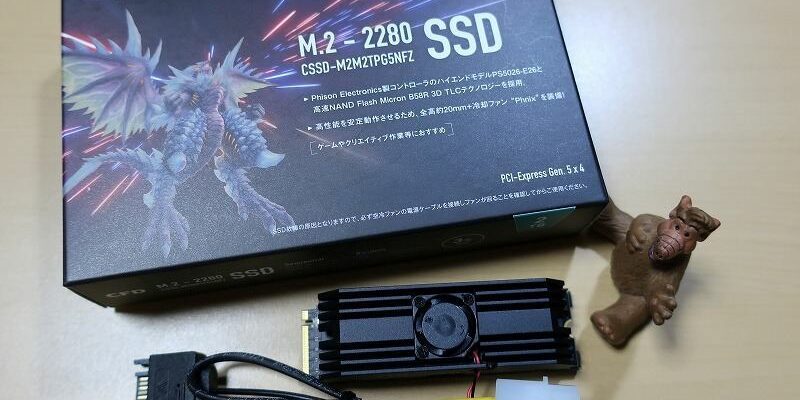PCI Express 5.0 promised incredibly high speeds for SSD NVMe. Alas, it does not seem to go without some inconvenience.
Announced several months ago, the first NVMe SSDs with PCI Express 5.0 support are now on the market in Japan. We feared quite strong noise pollution, and it is now confirmed…
One of the first models available
Virtually unknown in our latitudes, the CFD Gaming brand distributes three PCIe 5.0 SSD references for the moment, the CSSD-M2M1TPG5NFZ, CSSD-M2M2TPG5NFZ and CSSD-M2M4TPG5NFZ, respectively for fairly standard capacities of 1, 2 and 4 TB.
Very active on Twitter, momomo_us came into possession of the second model and allowed himself some tests. The objective was obviously to verify that the performance was roughly in line with the manufacturer’s announcements and the promises of PCI Express 5.0.
On the strict sequential read/write level, we are quite far from the theoretical speeds of the new standard, but the results are nevertheless convincing. We must not forget that all this is still very fresh, and that technologies and firmware will progress.

© VideoCardz
Nuisances, but for what warm-up?
On CrystalDiskMark, momomo_us therefore obtains speeds that slightly exceed 10 GB/s, whether in reading or writing. In random, the results are less brilliant, but with almost 100 MB/s in reading and 348 MB/s in writing. We are well ahead of NVMe PCIe 4.0 SSDs.
The other question that arose was of course that of noise pollution. On this subject, we regret that momomo_us did not engage in more tests. He just let us hear the noise of the small fan put in place by CFD Gaming, and unsurprisingly, the beast turbine quite loudly.
To refine the thing, it would however be necessary to see what temperature it allows to maintain. It would also be interesting to compare these results with those obtained with a stupid motherboard heatsink or a more elaborate heatsink.
Source : VideoCardz

11